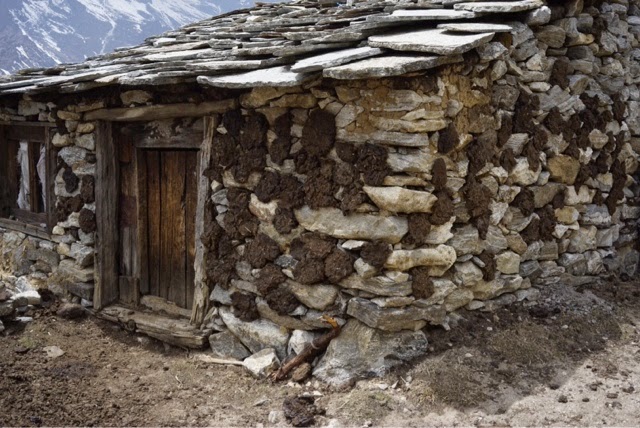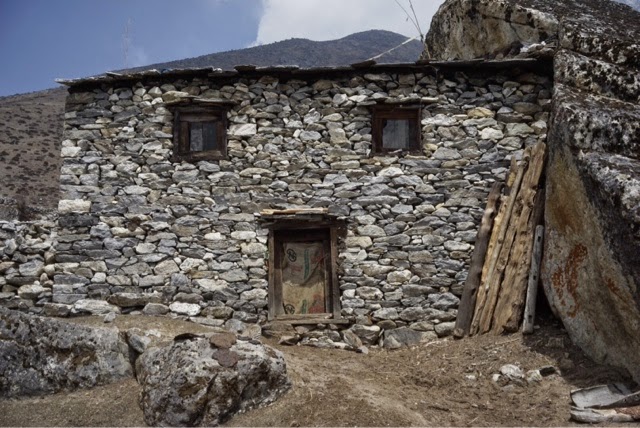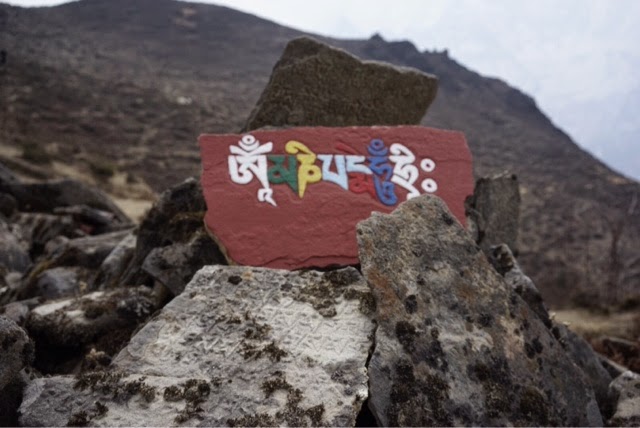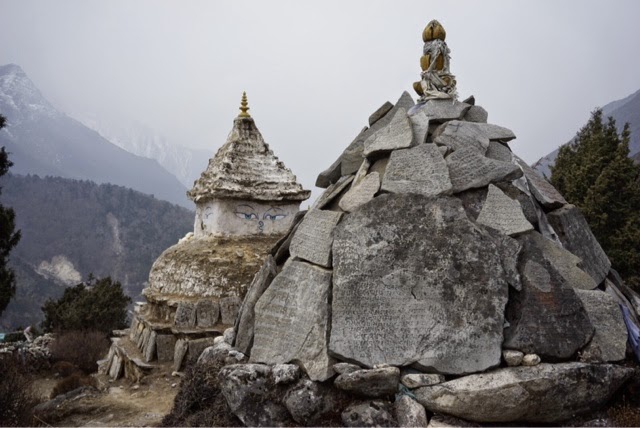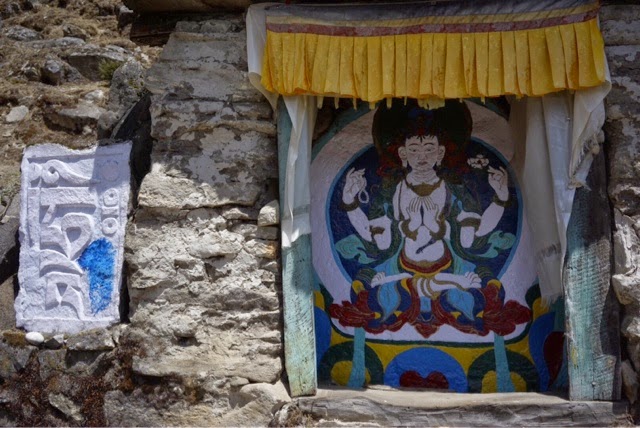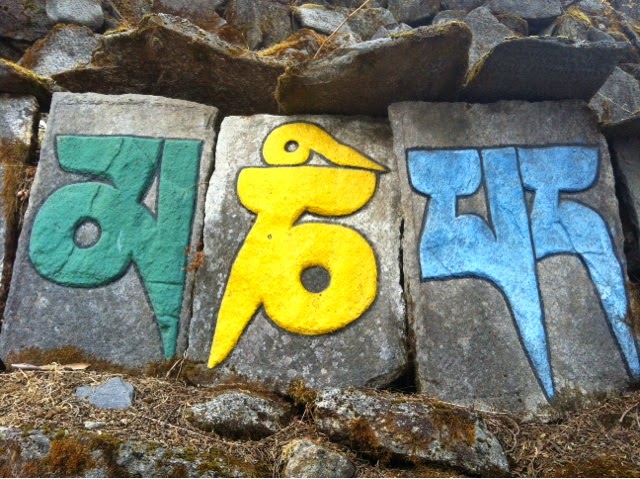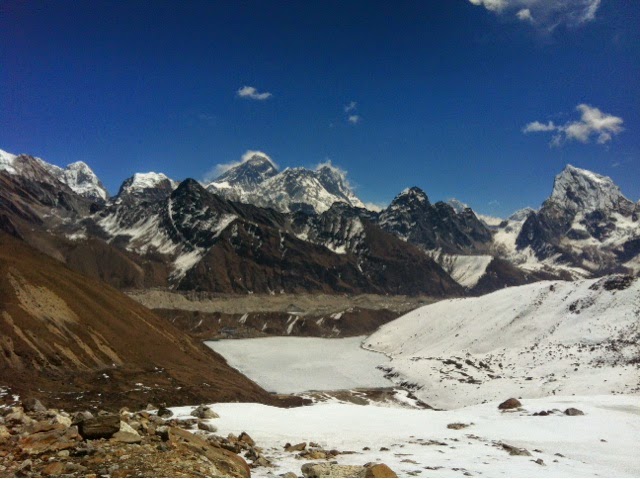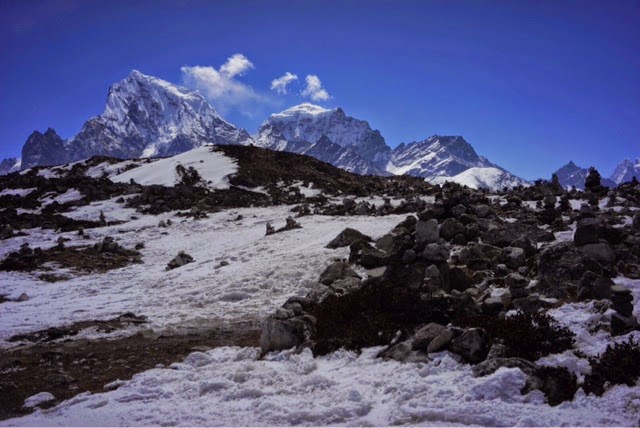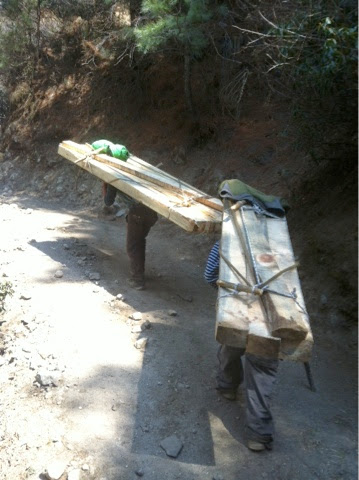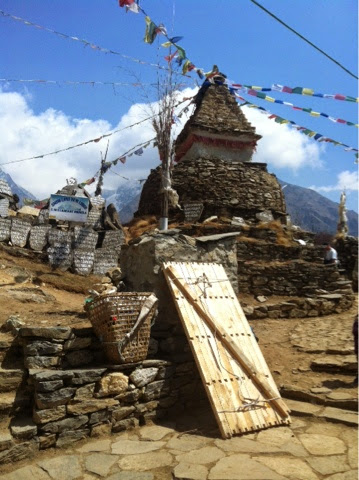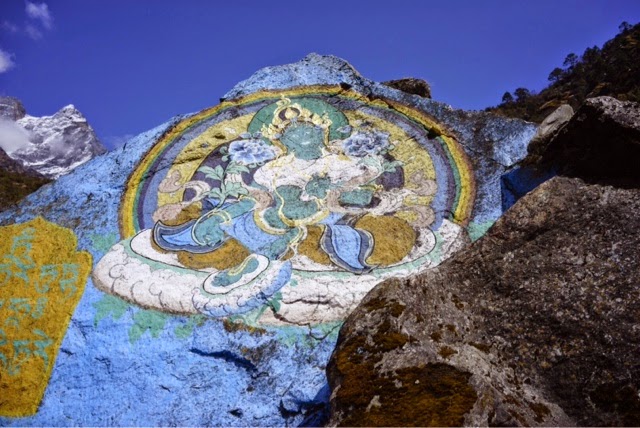Month: April 2014
I’m not going to go in to the details of what happened, what a superb effort went in to the recovery and treatment of the injured, how the general feeling of despair increased as the death toll spiralled, how saddened everyone was or what lessons are to be carried away from this – that has all been reported (and misreported) already. I’m also not going to mention parallels with other dangerous jobs and activities where life is at risk because that would be inappropriate at this juncture.
Following on from the awful tragedy of the 18th April there was an immediate unwritten agreement from all parties that it was not appropriate to proceed with operations on the mountain. And rightly so. This became a 4 day no go zone which was increased to a 7 day period. Again, on the surface, this is totally understandable however it also became apparent that this 7 day period was connected with an ultimatum to the government (more later).
Within 2 days of the tragedy it became obvious that a couple of teams had been drastically affected by their Sherpas being injured or killed. Their remaining Sherpas were not willing to go on and so for a few teams the decision was made to pull their expeditions.
Meanwhile straight after the incident a lot of Sherpas were sent home for 4 days to be able to mourn the loss of their brothers, cousins, friends and family. We all bided our time and waited to see if, and how many, would return. Everyone stayed off the mountain and the atmosphere at Base Camp was understandable sombre.
Apart from the occasional misplaced tactless updates about wanting to get on the mountain, most people here realised that we weren’t sure what was going to happen and therefore had no plans for continuing, but at the same time there was no reason to pack up and go home just yet. Who knows what is the right timescale to start considering going, let alone stepping, back on to the mountain. If there had been fewer Sherpas involved would 4 days have been right? Maybe 2 days? Perhaps a week? If it had been solely Westerners involved then I’m sure that the situation would be different again. But we can’t hazard a guess or come up with a matrix that stipulates these kinds of things. What we have to do is be respectful of the situation we are presented with and tread what we consider to be the right path. Which is what we tried to do.
On the 22nd April all the Sherpas, Sirdars and Expedition Leaders were invited to a Puja (blessing) and it was a sombre affair. There was a mini snow slide towards the end of the ceremony as we were all chanting ‘Om Mani Padmi Um’ as if the mountain was shedding a tear. At the end there were a few speeches where various people were invited up to say a few words – influential Sherpas and Westerners alike. But gradually the tone started to change and the whole event was hijacked by a political agenda. We already knew that the Sherpas (or a few militant ones at any rate) had presented an accord with 13 demands to the government with a 7 day deadline . It was the perfect setting to get the already emotional crowd of Sherpas indoctrinated.
Various Westerners said their piece and generally speaking they referred to the fact that we are a climbing community, that we have been working alongside each other for decades, that we know their families, we sponsor their children, we have lobbied the government and Ministry of Tourism on their behalf to improve their insurance (around US$10,000) and to include helicopter rescue which previously wasn’t covered. Last year we had an immediate whip round and created a benevolent fund for the families of the Icefall Doctors. We are not a disparate group – we work together and we need each other. It was also pointed out that the business on Everest doesn’t only provide for the Climbing Sherpas and the Base Camp staff but it provides for the entire Khumbu community as we trek in and stay at the teahouses or employ thousands of porters to get the loads to Base Camp.
Unfortunately one got the feeling that by inviting Westerners to comment they were just paying lip service and it was a token gesture and I really don’t think that any of what was said was actually digested.
A few were there to politicise the event which they did for the next hour and a half. When asked about what would happen if the government did meet their demands, the reply was along the lines of ‘you need to know that we have 300 signatures and we feel very strongly about this and our problem is with the government and we want better working conditions.’ But there was no indication, one way or the other, whether the mountain would be opening again.
We went away feeling that the whole event had been rather inappropriately comandeered but at the same time we could see that there might be a bit of light at the end of the tunnel – we just weren’t sure how long the tunnel was. Equally we thought that 300 signatures wasn’t necessarily a fair representation because a lot of the Sherpas may well have felt obliged to sign when presented with a petition. Peer pressure can be incredibly divisive in a community like this.
Then the Sherpas who had been sent down to be with their families started to return …. or not. This was when a few more teams realised that perhaps their future was in jeopardy because they just didn’t have the manpower to continue due to absence, or that they had the manpower but the Sherpas didn’t have the desire to continue. The house of cards was still standing but was in danger of losing some of its structural integrity.
Maenwhile there was also a flurry of impromptu meetings along with a representation to the government by Russel Bryce and Phil Crampton. We received news from Kathmandu that all would be well and that the mountain was not, and would not, be closed. Obviously no government likes to be held to ransom so they were trying to present a strong front whilst acceding to some of the demands. Unfortunately although the government were telling us that the mountain was open this wasn’t with the blessing of the militant Sherpa wing.
Time and again the Sherpas have stated that their argument is not with the Westerners and there is no animosity towards us. Their beef is with the government. They are sorry that we are caught in this tangled web on the sidelines but at the same time we (and the mountain) are being used as political leverage to get what they want. Obviously everyone wants better working conditions for the Sherpas but by holding us to ransom they are controlling the situation.
Around the same time the Liaison Officers started to arrive (at long last). Their take is that this situation is between us and the Sherpas to sort out. The Sherpas state that the situation is between them and the government. The government are stating that the mountain is open for business. We are going round and round in circles.
The Icefall doctors have stated that the Khumbu Icefall is too dangerous whereas a number of guides (and Sherpas) who have been here many many times have said that it’s in as good a condition as it ever has been. Admittedly the Sherpas are very concerned that there are still 3 bodies unaccounted for and their souls will be lost in the icefall. This is very bad karma and they don’t want to be stepping over their lost brothers but they also accept that the icefall could be rerouted.
So what to do, what to do?
We primed our group that this might be the year when they are expected to carry loads up to Camps 1 and 2 to spread the burden and lessen the workload, and therefore the journeys through the icefall, for our Sherpas. It might be that we have to provide a lesser service on the hill and that the guides would assist the few remaining Sherpas with fixing. All in all, our group had accepted that things had changed and there was going to be more grunt work and, by inference, a lower success rate. Back to the 70’s.
We also started to formulate a plan whereby we would have a low key trip in to the lower stretches of the icefall. Partly to do some training which we haven’t managed to do yet and partly to try and create some momentum and gradually get things back up and running again. There’s still plenty of time because if you recall in 2008 no one was allowed beyond Camp 2 until the 10th May because of the Chinese Olympics – and plenty of people still summited.
And then came the threats … insidious threats that have completely changed the nature of the demands and the situation. There was a veiled threat (or rumour of one) that if we go in the icefall we might not be safe. Our initial reaction wasn’t quite ‘bring it on’ but we certainly weren’t going to stop and, indeed, if the protagonists could be identified perhaps the rot could be removed.
But then it got worse. Sherpas are being told that if they go on the hill, well, ‘we know where you live.’ Sherpas are turning against Sherpas and in this country where these threats are sometimes carried out they are taken very, very seriously.
We have a full compliment of loyal Sherpas who we have worked with for years. They have all returned after the tragedy and even the ones who have lost brothers who were working for other teams are willing to continue. Or they were … until yesterday. Now they are categorical that if we go in the Icefall today they won’t be joining us. And then we realised that the worst could happen – we could go to the icefall and not be attacked but that we get back to a burning village. How can we, as a team, justify putting our Sherpas at risk?
And it’s not just our team of Sherpas who have been threatened. As a consequence of all these factors combined a number of teams announced yesterday that they are withdrawing from the hill. They have published statements with reasons for leaving, but we know that at least one of the larger teams have actually been threatened from a number of angles.
For a while it seemed that the Sherpa led teams were going to be allowed to stay and perhaps this was going to be the start of the new order that some Sherpas have been looking towards for years – Sherpa led expeditions with no Western Leaders involved. It would be the perfect season to see everyone else off the hill by threat and intimidation and leave their own Sherpa led teams and local companies to work the hill and summit, or not. And then we heard that it looks like Seven Summits have also been threatened so we aren’t so sure that even that is the case.
Our Sirdar and Sherpas think that it will be situation normal next year. But will it? This event cannot be undone. What has been said cannot be unsaid. People who are even remotely considering coming South next year will want assurances that probably aren’t worth the paper they are written on. Most of the costs involved on Everest are pretty much upfront and accounted for by the time a team arrives in Kathmandu. There is little, if any, refund available. We have decided that even if this folds we are going to pay our Sherpas because they at least are here and are willing to work (threats notwithstanding). But Shepras who have not returned, or are unwilling to work, may be in for a short sharp shock when they don’t get paid. If you or I were to go on strike we wouldn’t get paid – they may learn the hard way.
So we have now reached an impasse and we are not sure how, or even if, we should proceed. Indeed even if we do try or manage to succeed we have heard that we will not be well received in the villages further down the valley.
One of the stipulations to the government is that they (the militant wing) want the Sherpas to be paid even if they don’t work this season. They are trying to create a win-win situation but in the end everyone is going to be a loser. This is a classic Pyrrhic Victory.
Everest is a multi million dollar joint venture. Yes the government receives US$10,000 royalty per climber but this ‘only’ comes to around US$4,000,000 which pails in to comparison to the estimated US$10,000,000 to US$15,000,000 that is brought in to the area. Then there’s the summit bonuses of around US$300,000 as well. All cash, no taxes.
The loss to the Sherpa climbing community has now been tangled up in to a web of leverage, lies and threats and we in the climbing fraternity now finds their claims somewhat dubious. By wrecking this season the shop stewards have potentially reeked havoc on the local economy and our relationship with them for years to come. When we leave we will be leaving under sufferance and with a very bitter taste in our collective mouths.
Yours sincerely,
Tim Mosedale
+44 (0)17687 71050 (h)
+44 (0)7980 521079 (m)
www.timmosedale.co.uk
www.elmtreelodge-keswick.co.uk


